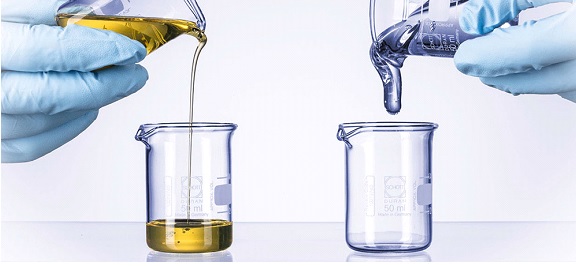Table of Contents
Viscosity:
The resistance was shown by the fluid while flowing is due to the viscosity. So, in simple words, we can say that the viscosity is friction in the fluid and this friction is produced between the adjacent molecules of the fluid.
So, if the fluid has higher viscosity that means it has higher friction between its adjacent molecules and if the fluid has lower viscosity that means it has lower friction between its adjacent molecules. We can also relate viscosity with the fluid thickness. The higher viscous fluids are thicker while lower viscous fluids are thinner. That’s why thinner fluids flow easily because they have low viscosity compared to a thicker fluid which has high viscosity.

For example, we can compare water with honey. We know that water can flow easily because it is thinner, but honey doesn’t because it is thicker. That means water has less viscosity compared to honey. Because of high viscosity honey doesn’t flow like water. So, from this example, we can compare the viscosity just by looking at the thickness of the fluids.
Viscosity is denoted by “eta” = η or sometimes by “mu” = μ.
The SI unit of viscosity is Pascale. second (Pa.s) or kg·m−1·s−1.
CGS unit of viscosity is Poise which is denoted by “P”.
Different Between Kinematic And Dynamic Viscosity:
Dynamic Viscosity:
The other name of viscosity is dynamic viscosity. So, it can be defined as the measurement of the fluid internal resistance to the flow due to the molecular friction. The SI unit of the dynamic viscosity is the same as the viscosity.
Kinematic Viscosity:
Kinematic viscosity can be defined as the ratio between dynamic viscosity or just viscosity to the density of the fluid. The S.I unit of the kinematic viscosity meter square per second. CGS unit of kinematic viscosity is Stokes which is denoted by St.
Stock’s Law of Viscosity:
According to stock’s law – the force of viscosity on a small sphere moving through a viscous fluid is represented by the formula given below:
Where,
F = Frictional Force,
μ = Dynamic Viscosity
R = Radius of Sphere
V = Sphere Velocity
Factors On Which Viscosity Depends
- The contact area between two-layers which are adjacent to each other in a fluid.
- The difference in velocity between two adjacent layers of the fluid.
- The gap between two adjacent layers of the fluid.
